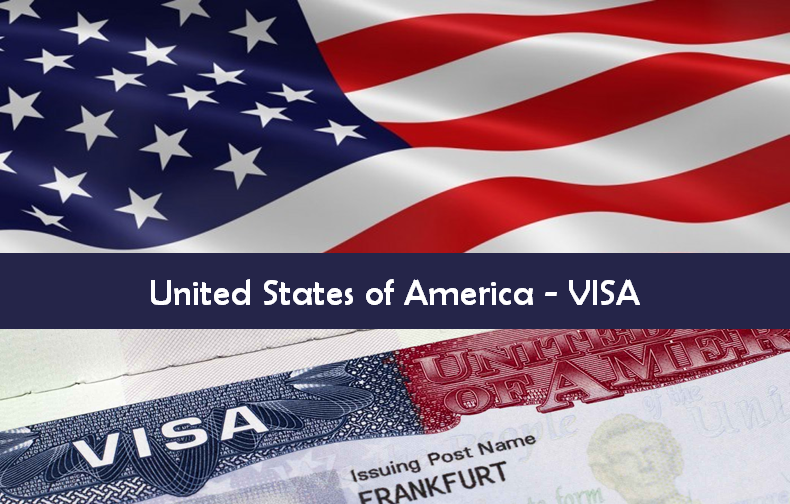Tourist Visa – United States of America (USA)

Applying for a US visitor visa allows a foreign national to temporarily relocate to the USA either for the purposes of tourism or to conduct a variety of business-based activities, though not to engage in employment.
As examples of the wide variety of non-immigrant USA visas, the B1 tourist visa, and B2 business visitor visa are not intended as routes to gaining lawful permanent residence in the USA through a Permanent Resident Card or US Green Card as it is more commonly known.
Immigrating to the USA or applying for an American visa to visit the United States for a short-term period can be a complicated and lengthy process. The structure of US visas for short-term visits or non-immigrant visas for the USA as they are collectively known is particularly complex with a wide range of specific immigration services available. In addition, those wishing to immigrate to the USA by applying for a US Green Card face a number of different routes based upon family connections or pre-arranged offers of employment. You can obtain American visas from an H1-B visa or L1 visa which function like a UK work permit to an EB-2 visa for a USA Green Card.
Benefits
The benefits of both B-1 visas and B-2 visas lie in the fact that as temporary immigration services they do not require applicants to have a pre-arranged job offer or to invest in the United States. Unlike permanent USA immigration routes such as the EB-3 visa and long-term non-immigrant visas such as H1-B visas and L1 visas, the B1 and B2 class of American visa do not require an employer to petition on behalf of the applicant and do not require a pre-arranged offer of employment. The need to secure a job offer is a key feature of US immigration and only in the case of the EB-1 visa and in some circumstances, the EB-2 visa, may a candidate immigrate based upon skills and experience in a similar manner to the Highly Skilled Migrant Programme or HSMP in the UK. Since B1 and B2 visa applications are not intended to enable candidates to live and work in the US, no such requirements are in place.
The B-1 can be particularly useful for those candidates who need to attend business meetings at short notice; Applicants may enter the country for the purposes outlined below on the understanding that they will return to their country of residence at the end of the grant of leave.
Eligibility Criteria
B1 visas
In America, immigration on a temporary basis through the B1 class, also known as a “visitor for Business” visa, allows a candidate to enter the USA for a maximum duration of one year. However, in practice, visas are granted according to the stated purpose of visiting on the application, and many are granted for less than a year. Whilst applicants are prohibited from working in the USA, the following business-related activities are permitted.
-
An applicant from a foreign branch of a US company may migrate to the USA to consult with the company.
-
An applicant from a foreign-based company may come to the USA to manage sales/purchases and to negotiate contracts.
-
Candidates may conduct market research, attend conferences seminars or conventions.
-
Applicants may enter the US in order to make an investment or open a US branch of a foreign company. This extends to activities performed prior to starting a business, e.g. opening bank accounts and obtaining office space.
-
Applicants who are professional athletes and who will not be earning a salary in the USA may enter on a B1.
B2 visas
In America, visas of this class are also referred to as “visitor for pleasure” visas, although in practice this visa service covers people entering the country for health reasons, visiting relatives, and participating in short study courses as well as those entering as tourists.
B-2 visas are granted for six months and impose the same working restrictions upon applicants as the B1 class. In some cases this America visa class may be extended by an additional six months however in both classes, candidates must be able to demonstrate that their visit to the USA is intended as a temporary one.
When applications are assessed considerable attention is paid to demonstrable evidence that the applicant has no intention of giving up their residence in their home country and that they have the intention and the means to support themselves during their stay and to leave before or upon the expiry of their US visa. An applicant’s intention to continue residing in their home country can be supported by evidence of family ties, property ownership, employment, or any evidence which suggests that an applicant is irrevocably linked to their own country.
The Visa Waiver Pilot Program
The USA Visa Waiver Program allows nationals of participating countries to enter the United States for a period of up to ninety days without a visa, if they are in possession of a return ticket or a ticket to a subsequent destination, with the exception of Canada. Applicants entering the county through the Waiver program are subject to the same restrictions as those entering on a travel visa of either class. At present, the following countries participate in the program.
Andorra, Australia, Austria, Belgium, Brunei, Denmark, Finland, France, Germany, Iceland, Ireland, Italy, Japan, Liechtenstein, Luxembourg, Monaco, Netherlands, New Zealand, Norway, Portugal, San Marino, Singapore, Slovenia, Spain, Sweden, Switzerland, The United Kingdom.
Spouse Immigration and Dependent Immigration
In America, visa applications in either the B1 or B2 classes are not regarded as potential routes to permanent residency or US citizenship; they are specifically designed for temporary visits to fulfill a pre-determined purpose. Spouses and dependents cannot obtain a B1 visa to accompany the principal holder, but they may be able to secure a B2 in order to do so. In cases where a B2 holder’s dependents are applying to join the principle, they must qualify for and obtain their own grant.
Additional Information – B1 in lieu of H1B
In limited circumstances, a B1 visa may be granted “in lieu” of an H1-B. This may occur where the work in question would normally require an H1B visa but the applicant’s salary is paid by a non-US source. Where visas of this kind are issued, the requirements are.
-
The work being undertaken must be H1-B level – a “specialty occupation”.
-
The applicant must be permanently employed and paid by a company outside the
The US. -
The applicant must have a suitable relevant degree to undertake the work.






